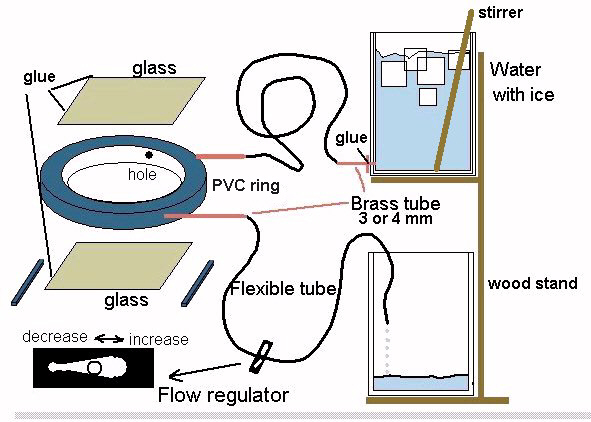- Two glass plates 40 x 40 mm, 1 mm thick (no more), (used for professional mounts of 35 mm slide film).*- PVC, aluminum or plastic ring, 6 to 8 mm thick*, inner diameter less than 40 mm, outside diameter more than 56 mm. Alternatively a square plate 1.4mm thick with >56mm diagonal. (See drawing below for a safety note!).
- 10 cm of brass tube, diameter 4 mm (see model shops) or two empty refills for a ball-point pen (see below).
- 1 metal or plastic washer, inside diameter equal to external brass tube diameter.
- Two plastic bottles with large aperture (1/2 to 1 liter).
- One meter (or more) of flexible plastic tube with 4 mm inside diameter (e.g. like air pump tubing for aquariums).
- One piece of hard plastic (or hard wood at a pinch) 2 x 5 cm, 3 mm thick.
- Epoxy glue (two component).


Left hand picture show one glass plate, 1 mm thick.

Ensure glass plates are not too large, to avoid protruding glass corners.


